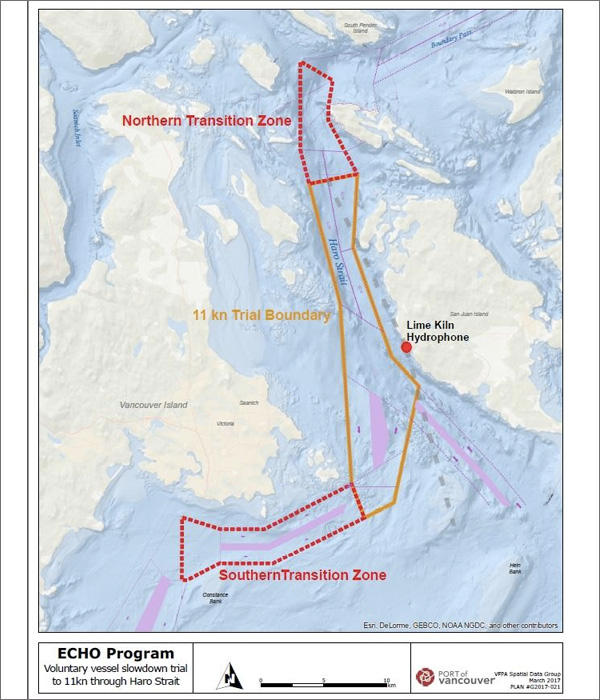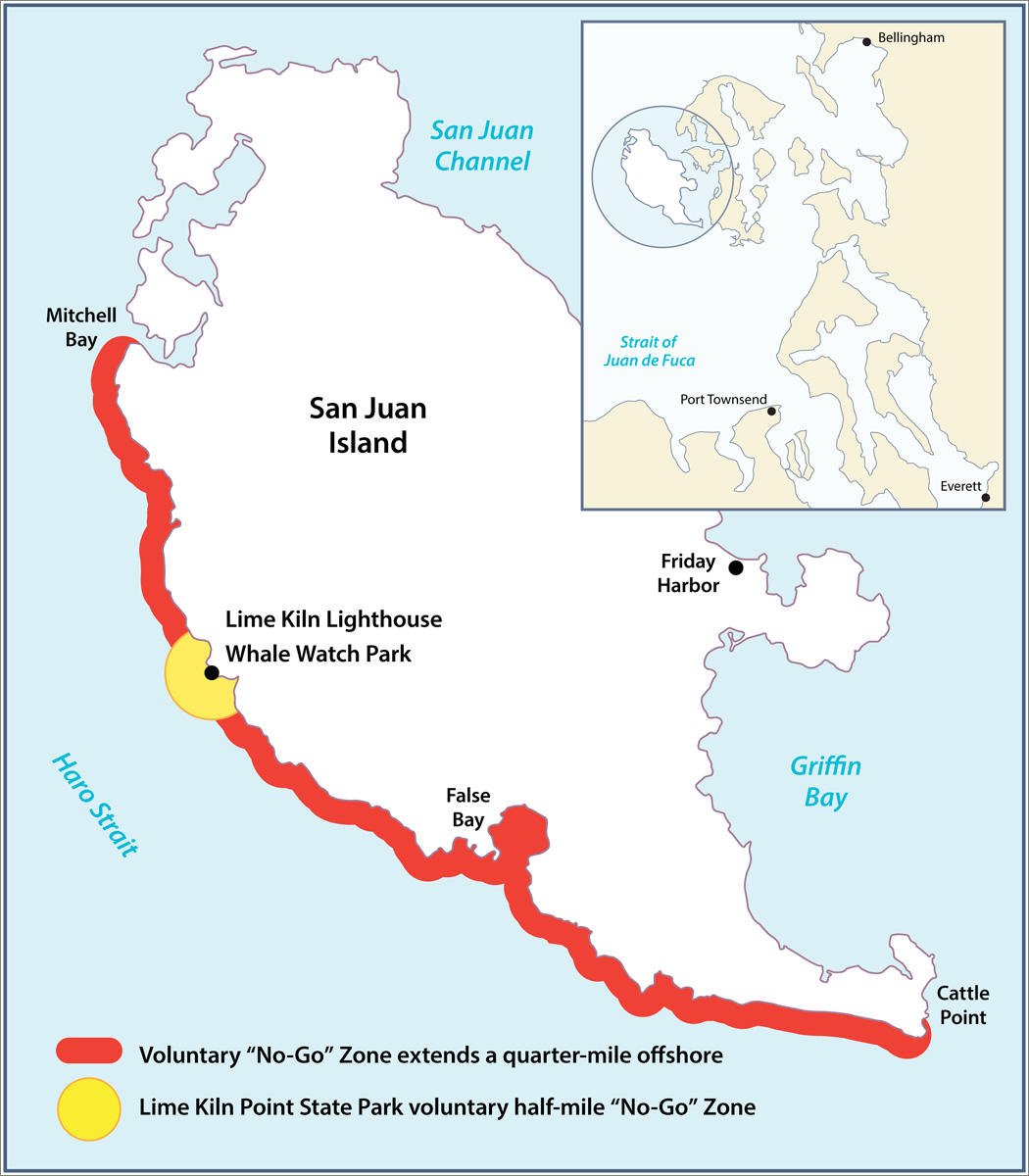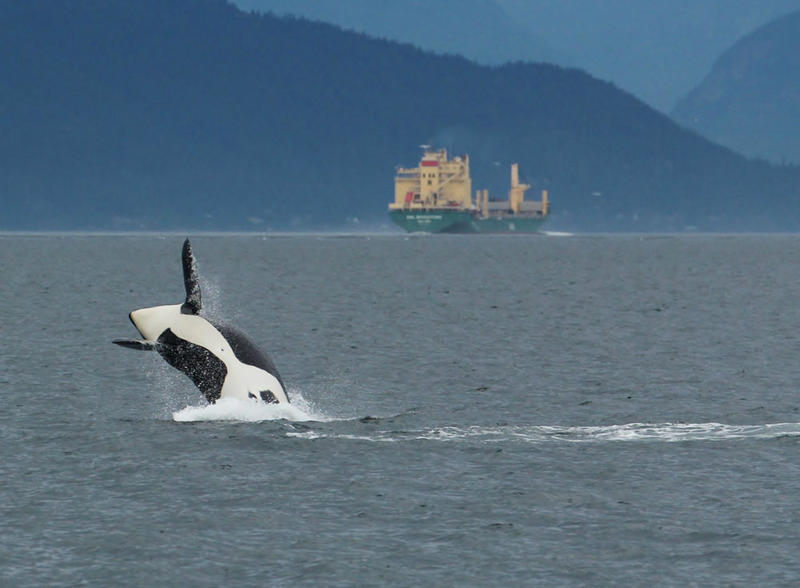
Ships In Washington-BC Strait Asked To Slow Down Again For Orcas
Listen
The call is going out again to the operators and pilots of big ships to slow down in the shared border waters between Washington and British Columbia. The idea is to reduce underwater noise that could bother endangered killer whales.
The voluntary vessel slowdown zone covers the length of Haro Strait, a busy shipping channel separating Victoria and Washington’s San Juan Islands. It’s also a vital summer feeding area for endangered orcas.
The Port of Vancouver, Canada, is leading the charge to reduce the impacts of vessel noise on the killer whales. A two-month trial slowdown last summer and fall demonstrated how cutting ship speeds to 11 knots could significantly reduce the racket underwater. Noise interferes with whale feeding success.
Beginning next month through September, the port authority is again asking cargo ships, tankers, cruise ships and ferries to slow down, but this time only when whales are confirmed in the area. That should result in fewer vessel delays.
Based on analysis of last year’s data, the Vancouver port’s environmental program identified “optimum speeds” for different vessel types to balance underwater noise reduction against potential operator inconvenience. This year the port is requesting that vessels transit the Haro Strait at the following speeds, “where it is safe and operationally feasible.”
- 15 knots or less – container ships, cruise liners and vehicle carriers
- 12.5 knots or less – bulkers, tankers, Washington State Ferries and government vessels.
“These speeds are estimated to result in delays of 11 to 18 minutes,” the port’s ECHO environmental program said in a newsletter Thursday. “We hope that this smaller delay will improve participation from all vessel types and in particular, bulkers and tankers.”
Scientists will again correlate vessel speeds on the surface with decibel readings from a network of hydrophones on the seafloor along with human observations of whale behavior.
Separately, the Washington Fish and Wildlife Department has established a voluntary “no-go” zone for boats of all kinds in a one-qaurter to one-half mile wide strip along the west shore of San Juan Island to reduce disturbance to orcas at that prime feeding and lounging area.
The population of resident killer whalesin the shared border waters of Western Washington and southwestern British Columbia has dwindled to 75 individuals. Orcas primarily use sound—including echolocation—to hunt for food, orient and communicate. Ship noise can mask the whale calls, effectively blinding the mammals, whose ears in a lot of ways act as their eyes.
Canadian and American government agencies have identified physical and acoustic disturbance as one of the key threats to survival of the iconic killer whales.
The Port of Vancouver, the primary destination for large vessels transiting Haro Strait, is also trying to incentivize quieter ships by discounting harbor fees for ships that meet low-noise criteria.
Copyright 2018 Northwest News Network
Related Stories:
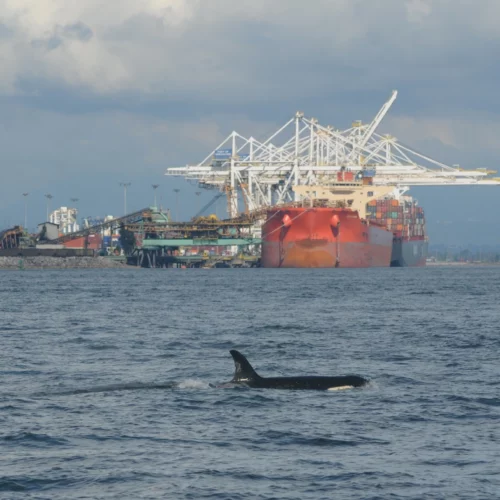
Captains of big ships eased up on the throttle during trial slowdown to help endangered orcas
The majority of captains of big commercial ships entering and leaving Puget Sound are cooperating with a request to slow down temporarily to reduce underwater noise impacts to the Pacific Northwest’s critically endangered killer whales. The duration of the experimental slowdown – modeled on a similar project in British Columbia – will be extended into the new year, organizers announced after a status report and celebration on the Seattle waterfront Friday.
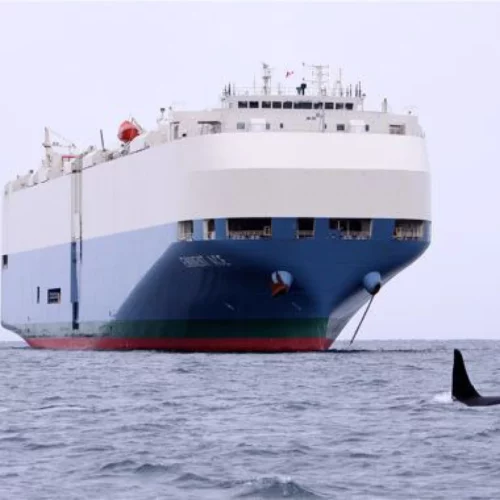
Reducing collisions between ships and whales? There’s apps for that, but they need work
Fortunately, it doesn’t happen very often in the Pacific Northwest that ships collide with whales. But when it does, it’s upsetting, tragic and the whale probably dies. Three separate teams have developed smartphone-based systems that can alert commercial mariners to watch out, slow down or change course when whales have been sighted nearby. A recent ride-along on a big container ship demonstrated that real-time whale alerts are still a work in progress.
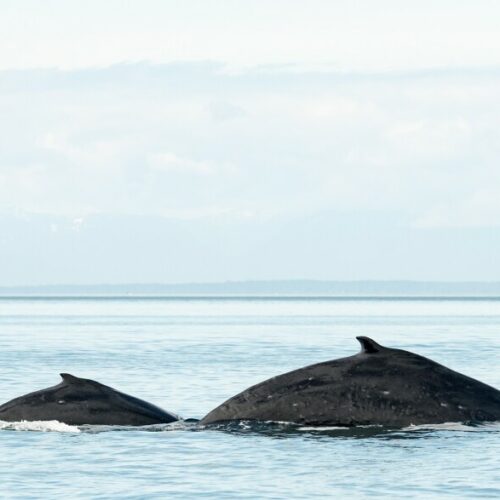
Record Numbers Of Bigg’s Killer Whale Sightings And Humpback Calves In Salish Sea
Whale watchers have spotted a record number of humpback calves in inland Pacific Northwest waters this season. There was also a record streak of Bigg’s killer whale sightings that just ended, according to a local whale research nonprofit. Those observations offer some good news to offset the ongoing concern about the survival of the Northwest’s iconic, but critically endangered resident orcas.

